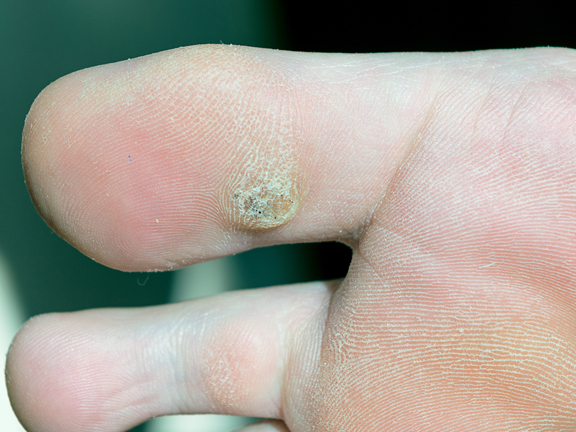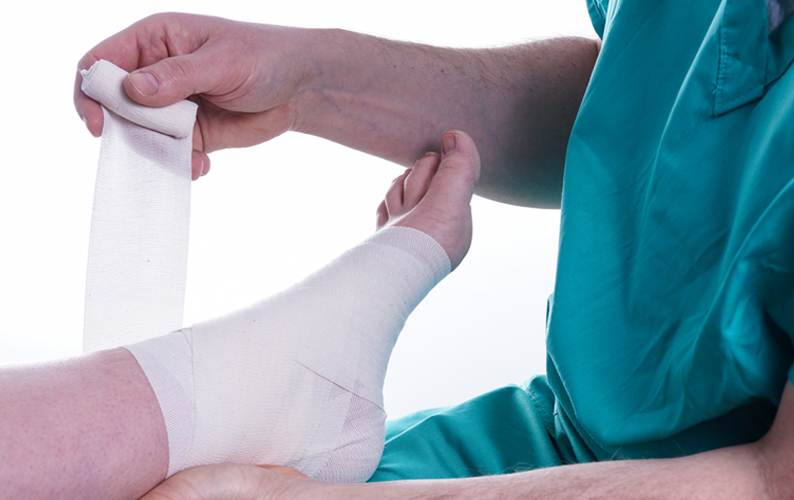If you’ve ever felt a painful bump on the bottom of your foot that just won’t go away, it might be a plantar wart. These small but stubborn growths are caused by a virus and can be both painful and persistent. The good news? They’re treatable.

What Is a Plantar Wart?
A wart—called a verruca in medical terms—is a skin reaction caused by the human papilloma virus (HPV). When the virus enters the skin (usually through a small cut or scrape), it can cause a wart to form. On the bottom of the foot, these are known as plantar warts—”plantar” simply refers to the location on the sole of the foot. It does not mean that anything has been planted in your foot!
Plantar warts are contagious. They’re often contracted by walking barefoot in shared, damp environments like:
-
Locker rooms
-
Public showers
-
Gym floors
-
Martial arts studios
If someone with a wart walks barefoot in these areas, the virus can live on the surface and infect the next person who comes into contact with it.
Why Are They So Painful?
Because plantar warts grow inward from the pressure of walking, they press against sensitive foot structures. This makes them especially uncomfortable—and why people often seek treatment once they start interfering with walking or daily life.
Treatment Options
There are multiple treatment options for plantar warts, but the two most effective are surgical removal or chemical cauterization with a strong acid. Here’s what to expect from both:
Surgical Removal
The area is first numbed with a local anesthetic. Once numbed, the wart is carefully removed. This procedure is painless once the area is numb and is successful in about 80% of cases. If the wart returns, another procedure may be necessary. Follow-up appointments are important to ensure proper healing.
Chemical Removal
This treatment involves applying a strong acid to the wart that essentially burns the wart tissue away over time. The area is covered with tape and a pad for several days. If the treatment works, the skin and wart will peel away over the next three weeks. In some cases, multiple applications are needed.
Aftercare Instructions
After Surgical Removal:
-
Minor bleeding is common. To reduce bleeding, lie flat with your legs elevated about 18 inches above your head.
-
Keep the bandage clean and dry.
-
At bedtime, remove the bandage, apply Neosporin ointment, and place a new dressing.
-
If the bandage becomes soaked with blood, apply more gauze and tape. If bleeding is excessive (dripping), call your doctor.
After Chemical Treatment:
-
The acid will cause a chemical burn to destroy the wart.
-
Try to keep the tape and pad in place for 3–4 days. If pain becomes intense, it can be removed sooner.
-
If there is no pain, you can leave the wart uncovered after removing the pad.
-
If a blister develops under the skin, use a clean tool to make a small cut in the blister to release fluid. Only remove enough skin to drain it—do not peel the entire area.
-
Keep the area clean with soap and water, and cover it with a bandage.
-
The wart and surrounding skin should begin to peel away gradually over about 3 weeks.
-
If pain, redness, or signs of infection occur, or if you’re unsure about any part of the healing process, call your podiatrist.

Plantar warts can be frustrating and painful, but with proper treatment and follow-up care, most people experience relief. Whether your doctor recommends surgical or chemical treatment, staying consistent with aftercare is key to healing and preventing recurrence.
If you think you have a plantar wart or have questions about treatment options, schedule a visit with your podiatrist today.